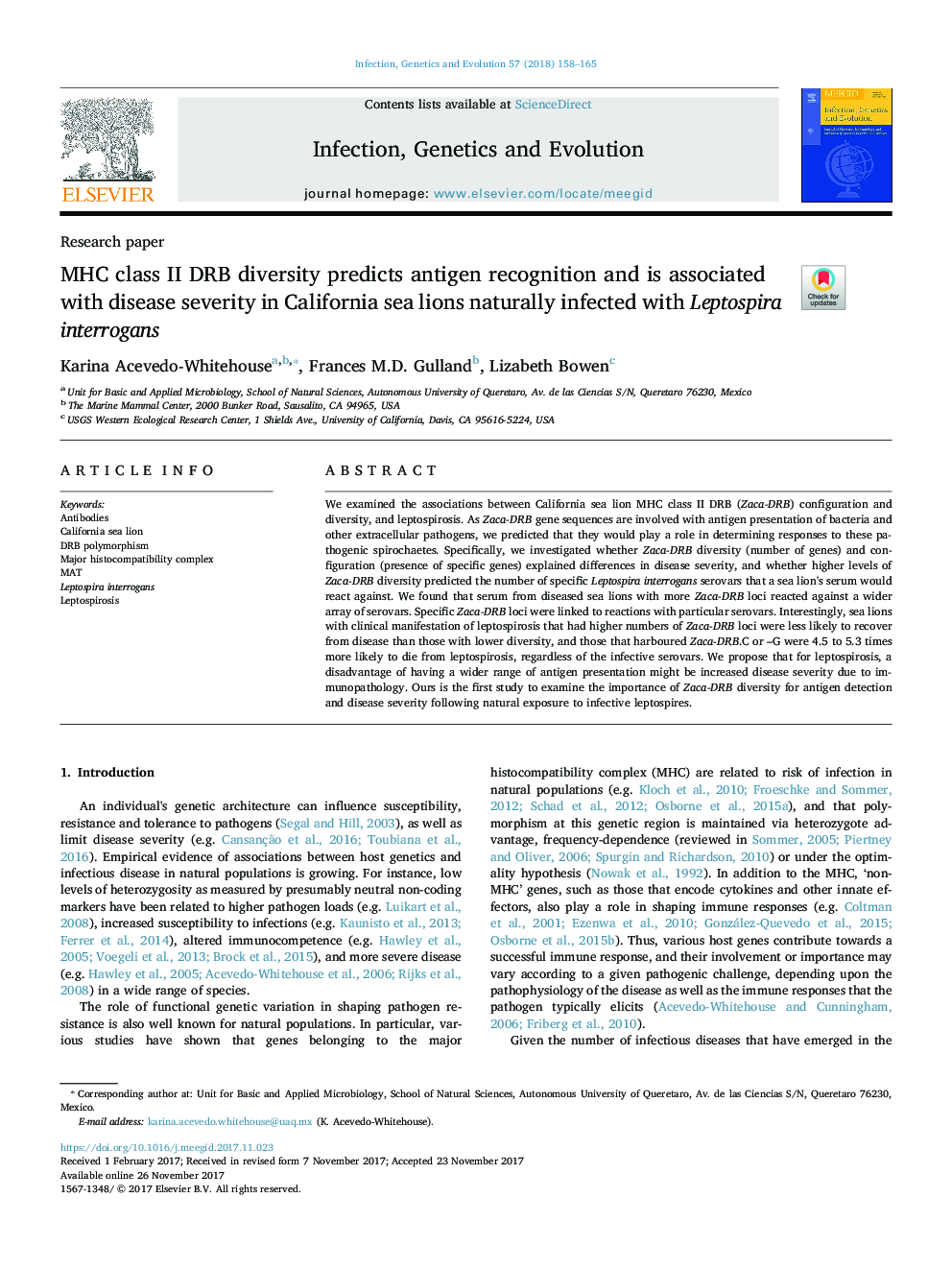| Article ID | Journal | Published Year | Pages | File Type |
|---|---|---|---|---|
| 8647036 | Infection, Genetics and Evolution | 2018 | 8 Pages |
Abstract
We examined the associations between California sea lion MHC class II DRB (Zaca-DRB) configuration and diversity, and leptospirosis. As Zaca-DRB gene sequences are involved with antigen presentation of bacteria and other extracellular pathogens, we predicted that they would play a role in determining responses to these pathogenic spirochaetes. Specifically, we investigated whether Zaca-DRB diversity (number of genes) and configuration (presence of specific genes) explained differences in disease severity, and whether higher levels of Zaca-DRB diversity predicted the number of specific Leptospira interrogans serovars that a sea lion's serum would react against. We found that serum from diseased sea lions with more Zaca-DRB loci reacted against a wider array of serovars. Specific Zaca-DRB loci were linked to reactions with particular serovars. Interestingly, sea lions with clinical manifestation of leptospirosis that had higher numbers of Zaca-DRB loci were less likely to recover from disease than those with lower diversity, and those that harboured Zaca-DRB.C or -G were 4.5 to 5.3 times more likely to die from leptospirosis, regardless of the infective serovars. We propose that for leptospirosis, a disadvantage of having a wider range of antigen presentation might be increased disease severity due to immunopathology. Ours is the first study to examine the importance of Zaca-DRB diversity for antigen detection and disease severity following natural exposure to infective leptospires.
Keywords
Related Topics
Life Sciences
Agricultural and Biological Sciences
Ecology, Evolution, Behavior and Systematics
Authors
Karina Acevedo-Whitehouse, Frances M.D. Gulland, Lizabeth Bowen,
